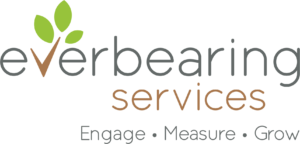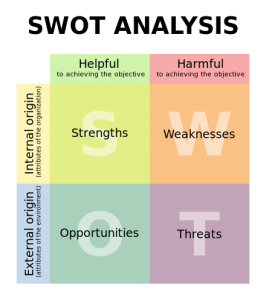Definitions
Algorithm
This is a specific formula used by search engines to rank the webpages it “reads” in order of importance or relevance for a particular keyword search. An algorithm is what is used to determine where pages fall in search results. It is also used on Facebook to determine the level of importance of how posts show up in a newsfeed.
Call to Action
Specific copy placed throughout a website or on social media that asks your visitors or customers to act. You may be asking them to click on a link, come visit your store or buy something online. On social media, you may be soliciting feedback or asking them to RSVP to an event. Calls to action are an excellent way to ask for engagement from your visitors and helps to increase conversion rates dramatically.
Content Management System
A intricate platform of computer code that permits a website to be edited, or “managed,” easily by someone with no knowledge of computer code. We most commonly use WordPress as our CMS to allow for easy use and access by multiple people, including the clients themselves.
Conversion
This term describes the act of successfully converting web marketing and social media visitors to participants or customers. They follow a call to action (like “buy now” or “sign up for our newsletter”) that you have put forth. Often, this translates to more business for you and actual dollars spent by your customers. We are always looking to improve conversion rates, meaning ways to bring you more sales via your web presence.
DMCA
Stands for the Digital Millennium Copyright Act which provides a reasonable way to protect your business from accidental copyright infringement, as long as you comply with their conditions.
Feed
A feed is structured, automated list of content or data produced by a website. Some feeds are built to allow users to subscribe to website or blog updates, so that they get a notification when there is something new. However, some types of feeds (such as products) can also be submitted to various search engines. Many sites have the option for a feed including most blogs and social sites like Twitter, Facebook and Google+.
Google Authorship
Google Authorship is a way to improve search results and credibility of content on the web. It connects your website to your Google+ profile. When you connect your blog to your Google+ page, Google rewards you by bumping those blog posts higher in search results and adds your profile photo to the search result, making it more attractive to those doing the search. It adds visibility, credibility and increased search ranking to your blog and website. Learn more here.
Hashtags
This refers to the # symbol, which is commonly used in front of certain words, as a way to tag, categorize and research key words and phrases. Hashtags are used on Twitter and Instagram, most commonly.
Inbound Links
This is a connection via code to your website from an outside source (another website). You receive inbound links when another site mentions you and links to your site. Inbound links are a major component of the search engines’ rankings and results. The more of these you have, the more searchable your site is.
Keywords
This refers to commonly used words or phrases that people type into search engines, such as Google. We can find out what keywords your potential customers use and then incorporate them into the web copy to help improve your ranking in search results. We uncover your competitor’s keyword phrases as well as the activity level and the online ad results those generate to help you adjust your web content to improve SEO.
Landing Page
The page that visitors land on when clicking through from a local search result or a PPC advertisement. In local search, a landing page should usually include a contact phone number, the address of the business, and perhaps driving directions. Landing pages include all the information that the customer needs to finish a call to action. Learn more about landing pages here.
Lead
A lead refers to a potential customer, generally that results from your efforts on the web. A lead could be someone that contacts you through the site or responds to an ad or call to action.
Long-Tailed Keyword
A long-tailed keyword is a more descriptive version of a basic key word that specifies characteristic(s) along with a keyword. For example, a key word might be “nursery” and examples of long-tailed keyword variants might be “Portland Oregon Nursery”, “Portland based Nursery”, “Rose Nursery” or “Organic nursery.”
Open Rate
This refers to the number of people that opened an email or e-newsletter that you have sent out. Click here to learn more.
Pay-Per-Click
Positioning
Positioning is the process by which marketers try to create an image or identity in the minds of their target market for its product, brand, or organization. Wikipedia This is based on the concept that consumers are overwhelmed by too much information. In order to deal with this, consumers find a position or place in their minds to place or associate new information. Marketers understand that by assisting people in “Positioning” your products or services you can influence how people associate or remember your product. For example 7UP’s positioning is the “Un-Cola”, or Avis the number two car rental companies positioning is “we try harder”.
Search Engine Marketing
A blanket term for improving the presence, and increasing the number of customers gained by a business via all forms of search. This includes PPC ads and others.
Search Engine Optimization
A term for improving the number of customers gained by a business via all non-paid forms of search, such as organic, local, universal, and mobile. This strategic activity involves placing and repeating keywords and key phrases on web pages, while writing in a way that is fluid and reads naturally. Learn more here.
SWOT
A strategic planning method used to evaluate the Strengths, Weaknesses, Opportunities, and Threats involved in a project or in a business venture. A SWOT analysis can be carried out for a product, place or person. It involves specifying a goal (objective) and identifying the internal and external factors that are favorable and unfavorable to achieving that objective. Setting a final set of goals or objectives should be done after the SWOT analysis has been performed. This would allow achievable goals or objectives to be set for the organization because they consider.
- Strengths: characteristics of the business or project that give it an advantage over others
- Weaknesses: are characteristics that place the team at a disadvantage relative to others
- Opportunities: external elements that the project could exploit to its advantage
- Threats: external elements in the environment that could cause trouble for the business or project
Identification of SWOTs is important because they can inform later steps in planning to achieve the objective. (source: Modified from Wikipedia)
Total Addressable Market
The Total Addressable Market is the size of the market that your product, service, or company can actually address. For example if the total market size for your service is the United States and your company can only service a geographic area of one county. In this case the Total Addressable Market for your company would be the market size for the one county you can service. To determine a TAM you would take the total market size and filter out the market segments you cannot address. These filters could be anything that determines the actual size of the market you can address. This could include but is not limited to: geographic limitations, age or race of customers, religious or group affiliations, and/or income segments.
Traffic
This refers to website traffic, meaning how many people come to your website to visit. We can determine how many people visit the website, what pages they visit and how long they stay on each page. This helps us to increase the quality of your site and increase your web traffic over time.
URL (Uniform Resource Locator)
It is an acronym for the address of a webpage (for example: www.everbearingservices.com). It also refers to the lengthier and specific addresses of any webpage, as appears in the search bar at the very top of any browser.
Web Consulting
- Engage in activities that work for your organization
- Be on the leading edge as opportunities arise
- Avoid wasted resources
Our diverse, talented team shares our combined years of marketing, design and technical experience, expertise and insight with your company. We deliver a powerful package of resources and specialized tools that are typically available only to big businesses but that we can affordably share with you. We work to discover the best way to put your web presence to work for you and can offer you a variety of web solutions tailored specifically for your business. Our Internet solutions can include technologies that make your day-to-day processes more efficient.
We consult on many aspects of business, including:
- Website design
- Social media set-up and integration
- Social media management
- Ecommerce consulting
- Existing website assessment
- Blogging
- Email marketing/newsletters
- Search Engine Marketing (SEM)
- Search Engine Optimization (SEO)
- Search Marketing Advertising or Pay-Per-Click campaigns
We collaborate with you and within our team to make plans, set goals, build sites, and support all your marketing efforts. We work to drive traffic to your website, increase leads and conversions, to ultimately increase sales. We provide consulting services for companies and organizations of all types and sizes from individual business owners to larger companies and nonprofits.
Web Copy
Referring to written text that is formatted for the web. It is the written content on the various pages of a website, or for social media use. Learn more here.
Web Hosting
The activity or business of providing storage space and access for websites. Learn more here.

